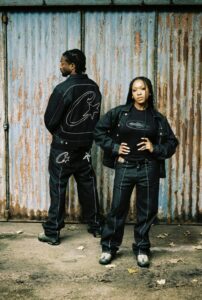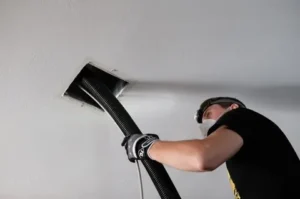
Embroidery And Stitching: What Are They?
Embroidery and stitching both use needles and thread, but they are different. Stitching is sewing two pieces of fabric together, like making clothes or fixing a tear. Embroidery is decorating the fabric with patterns and images. When you stitch, you join parts to make something strong. When you embroider, you add designs, like flowers or letters. People use stitching every day in sewing projects. Embroidery is more about art and decoration. Both need practice and care. Remember that embroidery uses special designs, while stitching builds or mends things.
Tools We Use For Stitching And Embroidery
Stitching and embroidery use similar tools, but some are special. Both need a needle, thread, and scissors. For stitching clothes, you might use plain thread and simple needles. For embroidery, you use colorful threads and embroidery needles that are easier to move side to side. An embroidery hoop holds the fabric tight so your design stays even. You can also use markers to draw patterns before you start. When you do logo digitizing for embroidery, you might use a computer and special software.
Embroidery Uses An Embroidery Size Chart
An embroidery size chart helps you pick the right design size. Before starting, measure the area on your shirt, hat, or bag. Look at the chart to find the matching height and width. This chart makes sure your pattern is not too big or too small. If your design is a small logo, the chart might say 2 inches wide. If it is a big pattern on a jacket back, it might say 8 inches high. Using the chart helps your design look neat and balanced on any item.
Simple Stitches For Sewing
Stitching has basic stitches like the running stitch, backstitch, and whipstitch. The running stitch consists of small, straight stitches that go in and out of the fabric. The backstitch is a stronger stitch for seams and repairs. The whipstitch wraps thread around the edge to keep pieces together. These simple stitches help you make clothes, fix holes, and create straight lines. You learn these first in sewing class. They are the building blocks before you try more fancy embroidery stitches.
Fancy Patterns In Embroidery
Embroidery uses many fancy stitches like satin stitch, French knots, and cross stitch. The satin stitch makes smooth, shiny shapes. French knots are tiny bumps that look like dots. Cross stitch makes little “X” patterns. Each stitch adds texture and color to your design. You can combine stitches to make flowers, animals, or words. Fancy stitches turn fabric into art. You practice these after learning simple sewing stitches. Embroidery is fun because you can mix colors and stitches to make your own picture.
From Hand To Machine: Logo Digitizing For Embroidery
Logo digitizing for embroidery means using a computer to change a picture into a stitch plan. You start with a picture of your logo. Software traces the outlines and picks stitches. You also use an embroidery size chart to set the right dimensions. After digitizing, you get a file that a machine reads. The machine follows the plan and stitches your logo on fabric. This is faster than hand embroidery and looks very neat. People use logo digitizing for uniforms, hats, and business shirts.
Special Style: 3d Puff Embroidery Digitizing
3D puff embroidery digitizing makes parts of your design pop out. To do this, you put foam under the stitches. The foam makes letters or shapes stand up, like a puff. You use special digitizing software to mark foam areas and set thicker stitches. The software also follows your embroidery size chart to size the puff correct. After testing on scrap fabric, you see a raised design on your hat or jacket. 3D puff embroidery is cool for sports teams and kids’ clothes because it feels fun to touch.
When We Need Embroidery Digitizing Services USA
Sometimes you need help from embroidery digitizing services USA. These are companies that turn your art into perfect stitching files. You send them your logo, size chart, and fabric type. They use expert software to digitize for flat or 3D puff embroidery digitizing. They check colors, stitches, and file formats like .DST or .PES. You get a ready-to-stitch file for your machine. Using these services saves time, especially for big orders or tricky designs. Many small businesses use USA-based services for fast help and good quality.
Uses Of Stitching And Embroidery In Clothes
Stitching makes clothes by sewing seams and hems. Every shirt, dress, or pair of jeans uses stitching. Embroidery decorates clothes with names, logos, and pictures. School uniforms often have embroidered badges. Hats have embroidered logos. Embroidery also goes on towels, bags, and blankets for a personal touch. Stitching builds the item, and embroidery makes it special. Both are common in fashion and everyday items. Many people learn basic stitching first, then try embroidery to add art to their fabric.
Learn And Fun With Sewing And Embroidery
Sewing and embroidery are fun skills you can learn. Start with simple stitching projects like a pillow or a small bag. Practice straight lines and basic stitches. Then try simple embroidery patterns like hearts or stars. Use your embroidery size chart to make sure your designs fit. Try logo digitizing for embroidery if you have a computer and software. If you want the puff look, learn 3D puff embroidery digitizing with foam. As you practice, you get better at neat, balanced stitches. Sewing and embroidery let you create gifts, clothes, and decorations that you can wear and share proudly!

